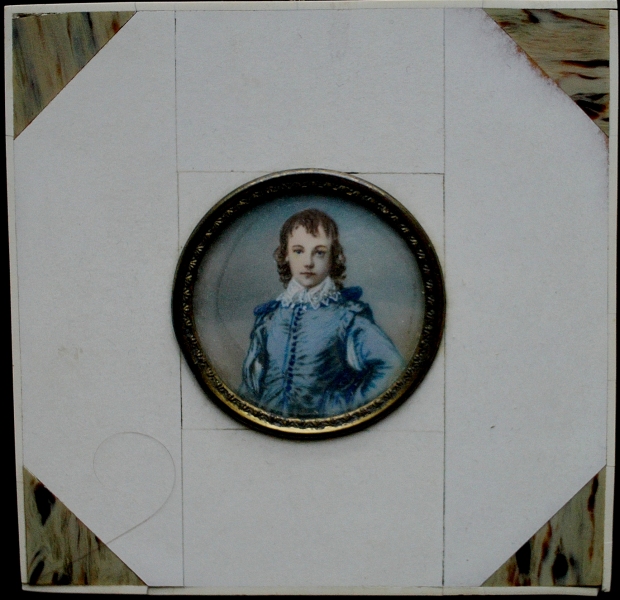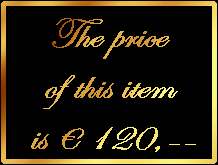

"The Blue Boy"
probably Jonathan Buttall (1752–1805)
after a painting by Thomas Gainsborough (about 1770)
The Blue Boy (c. 1770) is a full-length portrait in oil by Thomas Gainsborough, now in the Huntington Library, San Marino, California.[1] Perhaps Gainsborough's most famous work, it is thought to be a portrait of Jonathan Buttall (1752–1805), the son of a wealthy hardware merchant, although this has never been proven. It is a historical costume study as well as a portrait: the youth in his 17th-century apparel is regarded as Gainsborough's homage to Anthony van Dyck, and in particular is very close to Van Dyck's portrait of Charles II as a boy.
Gainsborough had already drawn something on the canvas before beginning The Blue Boy, which he painted over. The painting is about life-size, measuring 48 inches (1,200 mm) wide by 70 inches (1,800 mm) tall. The painting was in Jonathan Buttall's possession until he filed for bankruptcy in 1796. It was bought first by the politician John Nesbitt and then, in 1802, by the portrait painter John Hoppner. In about 1809, The Blue Boy entered the collection of the Earl Grosvenor and remained with his descendants until its sale by the second Duke of Westminster to the dealer Joseph Duveen in 1921.[3] By then it had become a great popular favourite in print reproductions, after being exhibited to the public in various exhibitions at the British Institution, Royal Academy and elsewhere.
In 1919, the painting had inspired German film producer Friedrich Wilhelm Murnau to create his debut film Knabe in Blau (The Boy in Blue).
In a move that caused a public outcry in Britain, it was then sold to the American railway pioneer Henry Edwards Huntington for $728,800 (£182,200), according to Duveen's bill,[5] a then-record price for any painting. (According to a mention in The New York Times, dated 11 November 1921, the purchase price was $640,000, which would be over $8.5 million in 2014.[6]) Before its departure to California in 1922, The Blue Boy was briefly put on display at the National Gallery where it was seen by 90,000 people; the Gallery's director Charles Holmes was moved to scrawl farewell words on the back of the painting: "Au Revoir, C.H.".
It is often paired with a painting by Thomas Lawrence called Pinkie which sits opposite to it at the Huntington Library.
painting: waterbased on an ivory chip
frame: bone with inlay.
not signed
preservation painting: excellent
preservation frame: good
dimension vertically: 103 mm
inner diameter: 40 mm
thick: 10 mm
convex glass
small eyelet




stock number 498

